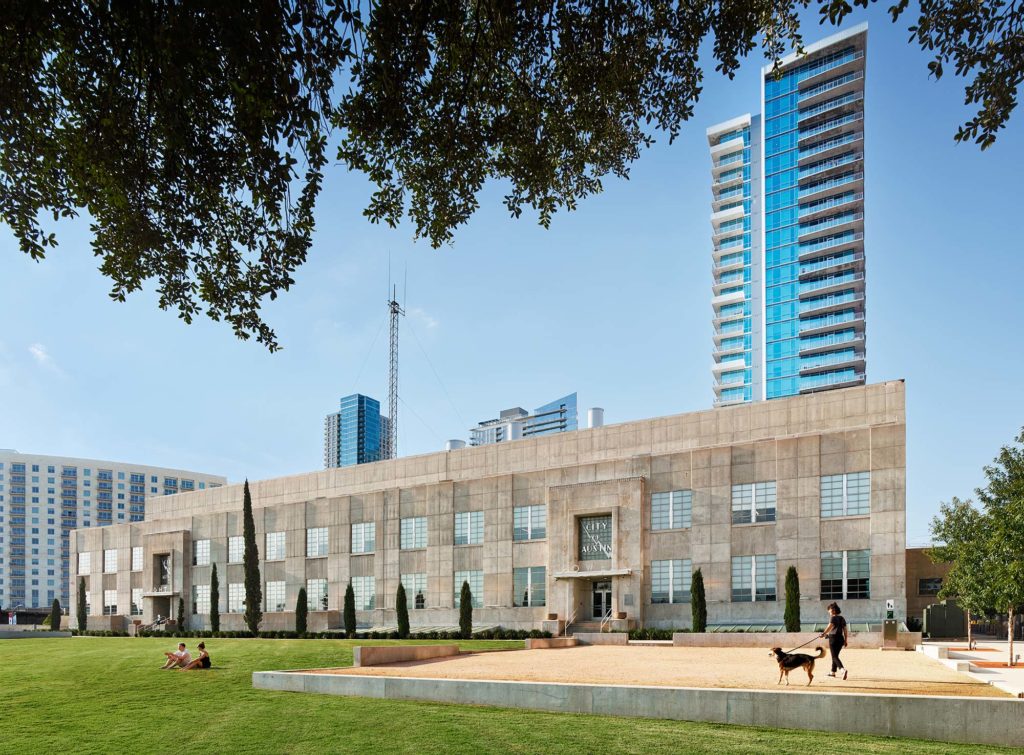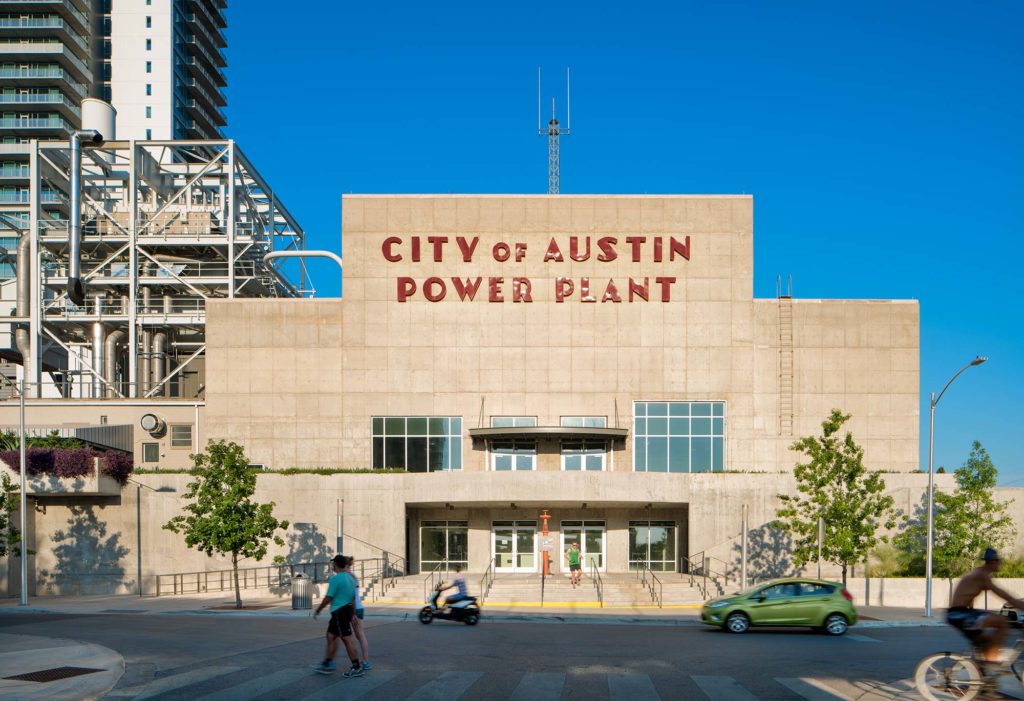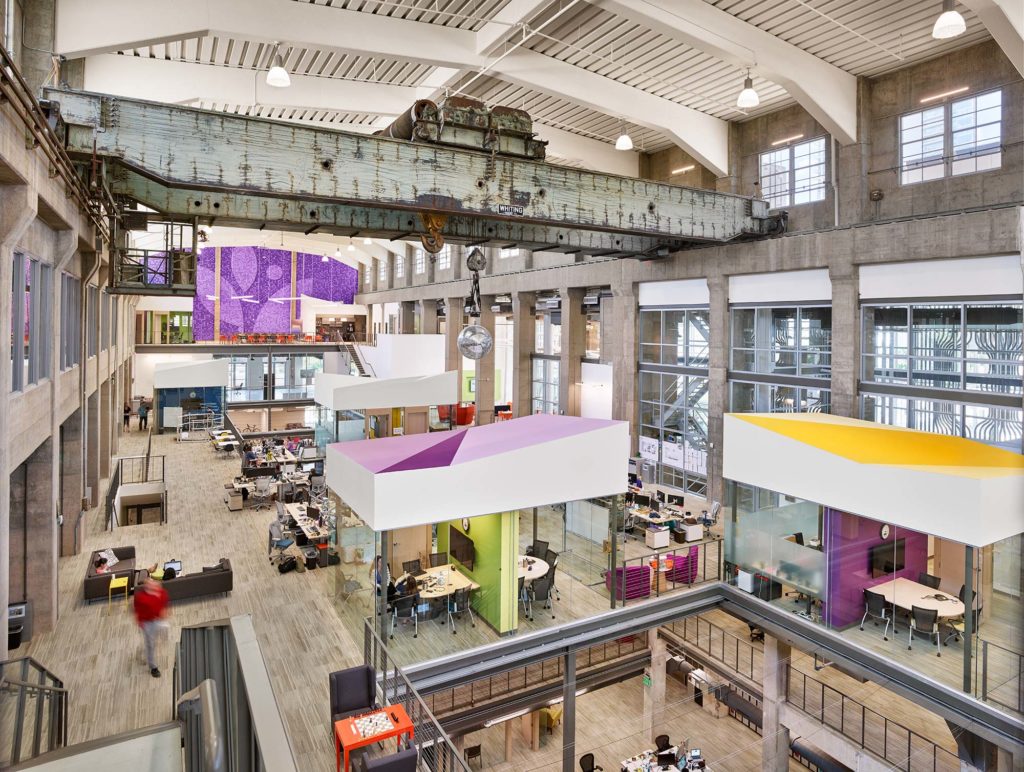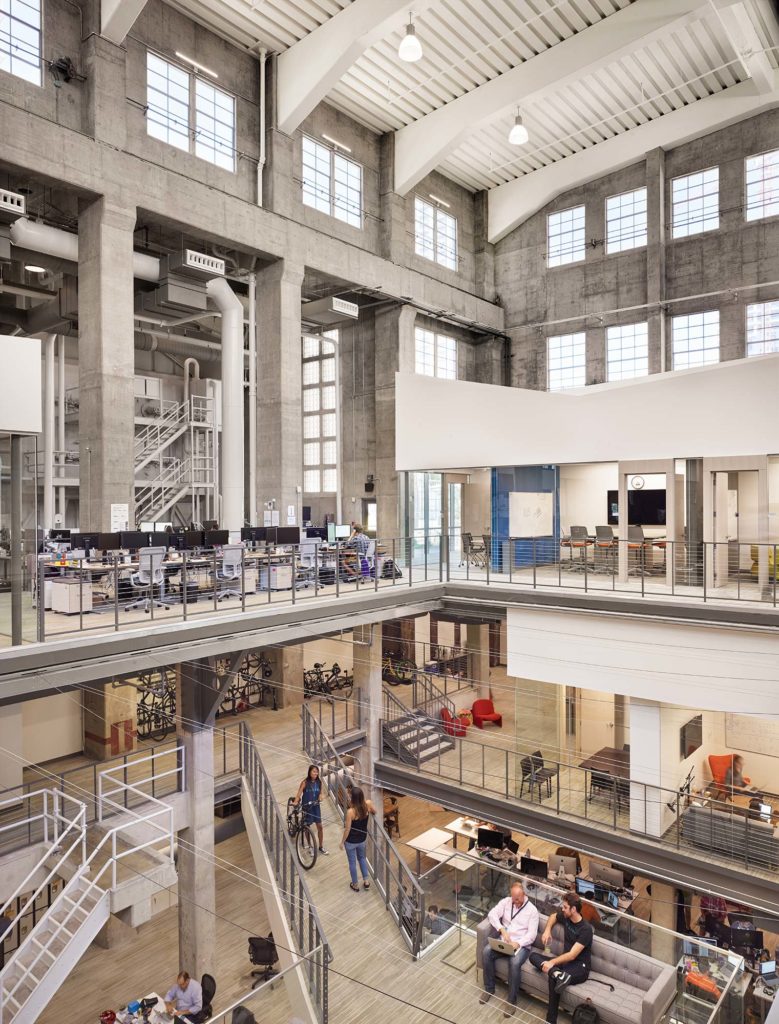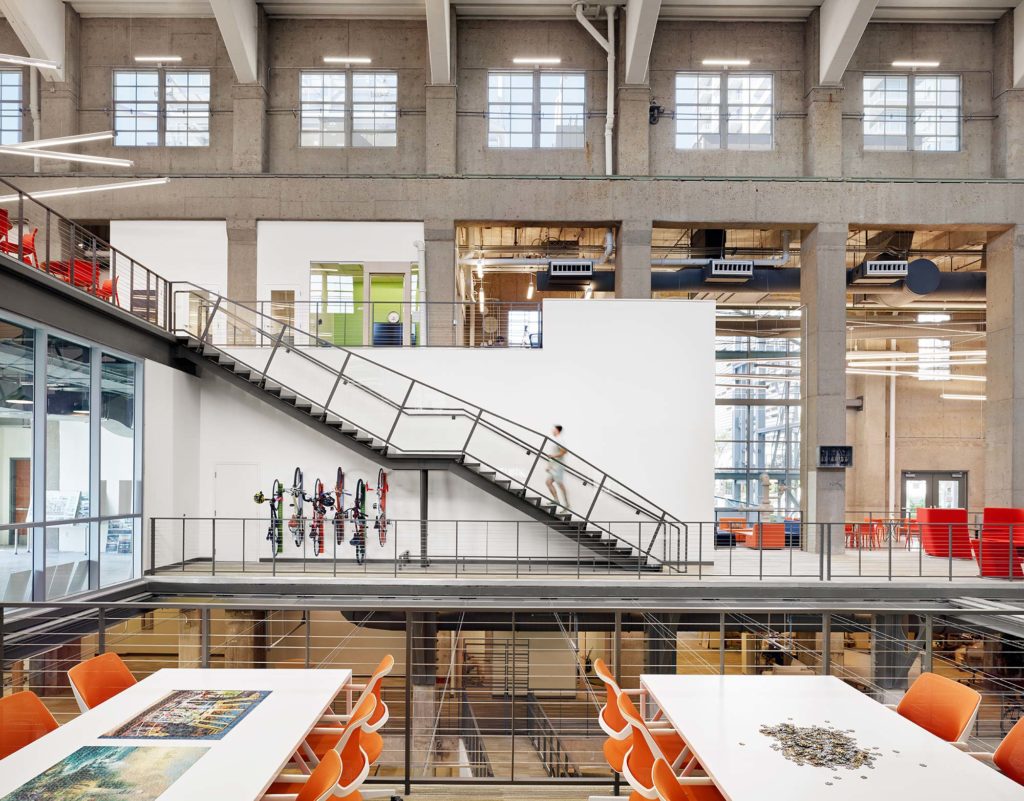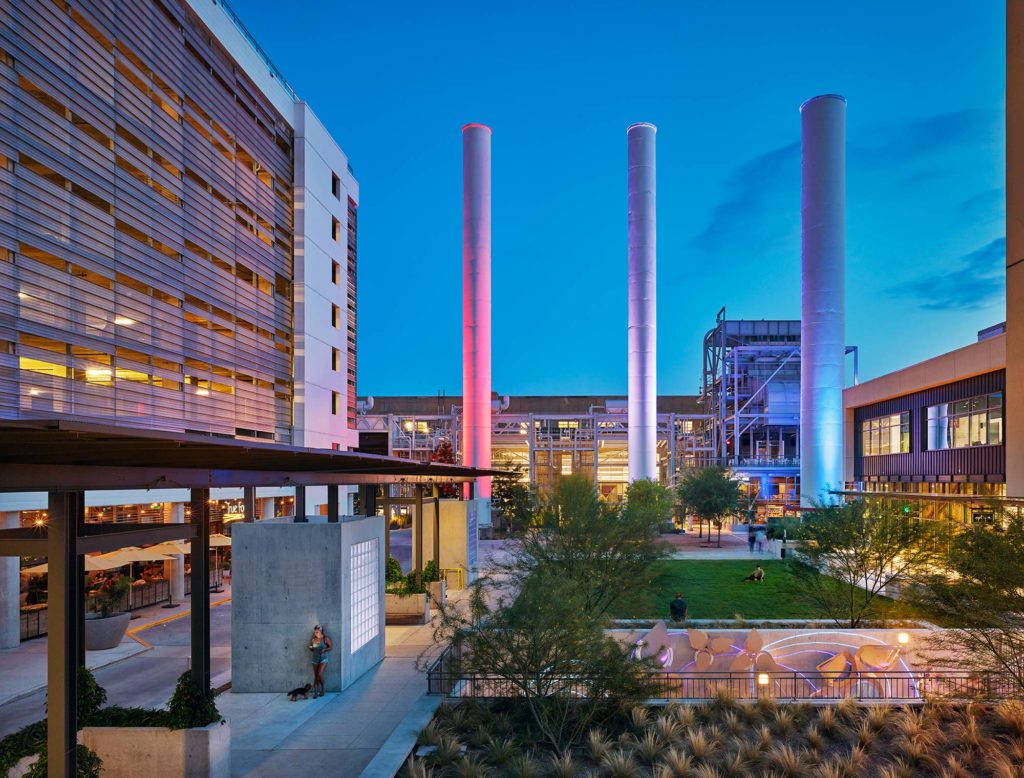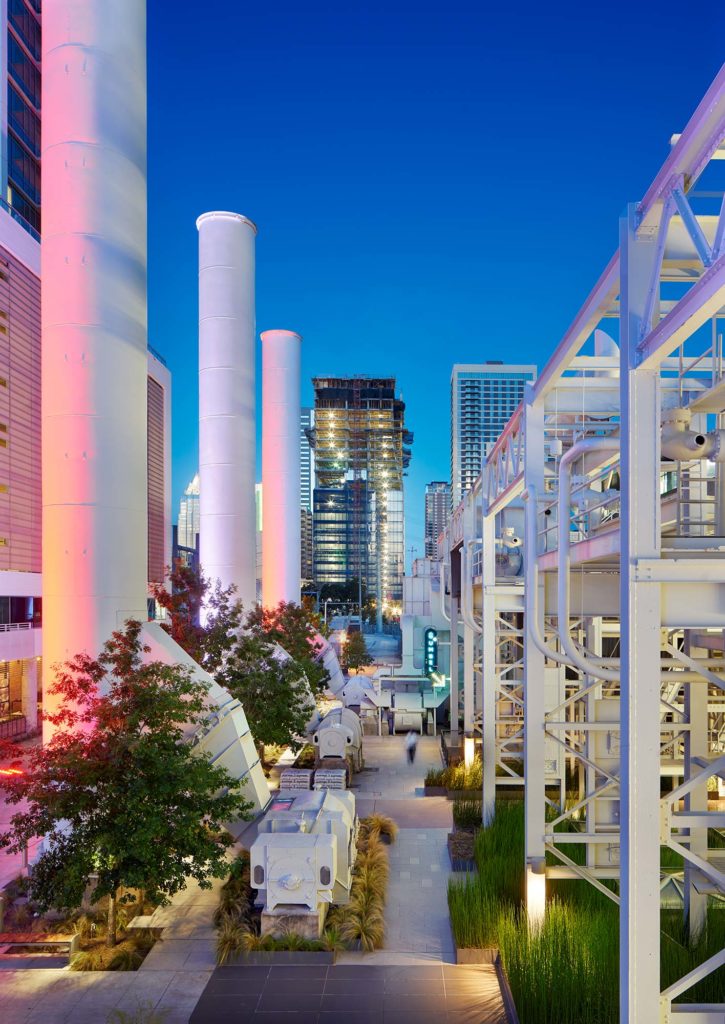As age-old tensions between developers and preservationists continue, the Seaholm Power Plant Redevelopment serves as an example of how a rapidly growing city can honor its historical heritage while accommodating the demands of the present and future. At the heart of the redevelopment is the massive and dignified former power plant, built in the Art Moderne style. This movement followed Art Deco and was characterized by compact massing and minimal detailing, expressed by the plant’s purposeful, streamlined design and cast concrete construction. Sitting alone on the riverbank—its proud “City of Austin Power Plant” vintage lettering easily visible for miles—this functional, honest building has become a well-known reference to the city’s past and one of its most iconic landmarks.
The City of Austin decommissioned the facility in 1989, setting off nearly two decades of wrangling between various government agencies, civic groups, preservationists, concerned citizens, and private investors regarding what to do with the empty building and grounds. Ideas varied from museum to aquarium to music venue, but eventually the increasing pressure of development in the finite geography of the downtown district caused the City to approve an investor’s proposal to repurpose the site into a mixed-use development and residential tower, with the power generation facility converted into private office space.
Transitioning the city-held property into private hands required sensitivity and thoughtfulness. Mindful of the building’s history and location adjacent to parks and transit hubs, the architects carefully incorporated pedestrian-friendly walkways, a large public lawn space for events overlooking the river, and an inner courtyard from which one can admire the old smokestacks of the power plant. The architects preserved some of the plant’s original boilers and 75-foot gantry crane, and the old turbine hall inside remains open to visitors.
In addition to integrating the development with its edge-of-downtown surroundings, stakeholders paid particular attention to sustainable design. The property participated in the Austin Energy Green Building program and was also awarded LEED Gold status. But perhaps the most impressive adaptation was the transformation of the plant’s old water-cooling systems into a high-capacity rainwater collection system capable of storing and supplying the property’s irrigation needs. – Kristen Decker Ali
Sustainability Highlights
- LEED Gold (U.S. Green Building Council)
- AEGB 3-Star (Austin Energy Green Building)
